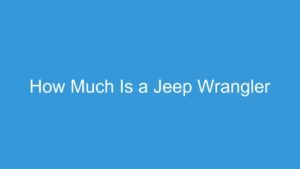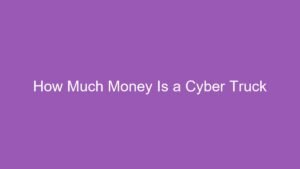
Contents
- How Much Is Gap Coverage Insurance? Your Friendly Guide to Understanding the Cost
- 🛒 Recommended Product
- What Exactly Is Gap Coverage Insurance (and Why You Might Need It)?
- So, How Much Is Gap Coverage Insurance, Really?
- Where Can You Get Gap Coverage (and How It Impacts Price)?
- 🛒 Recommended Product
- Step-by-Step: How to Estimate Your Gap Insurance Cost & Make a Smart Choice
- Tips for Saving Money on Gap Coverage
- Common Mistakes to Avoid
- Is Gap Coverage Worth It For You?
- 🛒 Recommended Product
- Conclusion
- FAQ
How Much Is Gap Coverage Insurance? Your Friendly Guide to Understanding the Cost
Buying a new car is exciting! The smell of new upholstery, the sleek lines, the promise of adventures on the open road. But amidst the excitement of signing on the dotted line, you might hear a term that sounds a little… extra: Gap Coverage Insurance.
Many wonder, “What exactly is Gap Coverage, and more importantly, how much is Gap Coverage Insurance going to add to my monthly bill?” Don’t worry, you’re not alone! It’s a common question, and understanding its cost and value can save you from a potential financial headache down the line.
Consider this your friendly, jargon-free guide to demystifying Gap Coverage insurance costs. We’ll break down what it is, what influences its price, and how to ensure you’re getting a fair deal.
🛒 Recommended Product
What Exactly Is Gap Coverage Insurance (and Why You Might Need It)?
Before we dive into dollars and cents, let’s quickly define Gap Coverage. GAP stands for Guaranteed Asset Protection. It’s a specific type of auto insurance that protects you if your financed or leased vehicle is declared a total loss due to an accident, theft, or natural disaster.
Here’s the crucial part: cars depreciate rapidly the moment you drive them off the lot. Often, your vehicle’s actual cash value (what your standard auto insurance policy would pay out) is significantly less than what you still owe on your loan or lease.
Gap Coverage bridges this “gap” between what your standard insurer pays out and your remaining loan balance. Without it, you could find yourself without a car, but still owing thousands of dollars to the lender! This situation, often called “negative equity,” is where Gap Coverage truly shines as a financial safety net.
So, How Much Is Gap Coverage Insurance, Really?
The cost of Gap Coverage can vary widely depending on several factors, but generally, it’s considered a relatively small investment for the peace of mind it offers.
Typically, Gap Coverage can range from just a few dollars a month if added to your existing auto insurance policy, to a one-time fee of several hundred dollars (often between $400 – $800) if purchased as a standalone product or through a dealership.
Here’s a breakdown of the key factors that influence the price:
-
Vehicle Value and Purchase Price:
- The more expensive your vehicle, the more Gap coverage will likely cost. A higher purchase price means a larger potential “gap” between its value and your loan amount.
- Vehicles that depreciate very quickly might also see slightly higher Gap insurance costs.
-
Loan or Lease Terms:
- Down Payment: A smaller down payment (or no down payment) means you’re financing more, which increases the likelihood of negative equity and can lead to a higher Gap premium.
- Loan Length: Longer loan terms (e.g., 60-72 months) mean slower equity build-up, making Gap coverage more critical and potentially slightly more expensive.
- Interest Rate: A higher interest rate means you’re paying more overall for the car, increasing your loan balance and potentially the Gap coverage cost.
-
Your Primary Auto Insurance Provider:
- When purchased through your existing auto insurer, Gap coverage is often an add-on or endorsement to your comprehensive and collision policy. This is usually the most affordable option, often adding just $20-$60 per year, or a few dollars per month.
-
Where You Purchase It From:
- Dealerships: Often roll the cost into your loan, making it seem small on a monthly payment, but the total price is generally higher than what your insurer would offer. They might charge a flat fee, which is then financed.
- Credit Unions/Banks: Some lenders offer their own Gap programs. These can be competitive, sometimes falling between dealership prices and direct insurer prices.
-
State Regulations:
- Some states have specific regulations regarding Gap insurance, which can influence pricing and availability.
-
Your Driving Record (Indirectly):
- While not a direct factor for Gap coverage itself, a poor driving record can increase your overall auto insurance premiums, and if Gap is tied to that, it might indirectly affect the total perception of cost.
Where Can You Get Gap Coverage (and How It Impacts Price)?
Understanding your options for purchasing Gap Coverage is key to getting the best price:
🛒 Recommended Product
-
Your Auto Insurance Provider (Often the Best Value):
- Pros: Usually the most affordable option, typically added as a small endorsement to your existing policy. Convenient, as you’re already dealing with them.
- Cons: Not all insurers offer it, or they might have specific eligibility requirements (e.g., only for new cars).
-
The Car Dealership (Convenient, but Often More Expensive):
- Pros: Extremely convenient – you can sign up for it right when you purchase the car. Often rolls the cost directly into your car loan.
- Cons: Almost always more expensive than buying it from your auto insurer or a third-party provider. Because it’s rolled into your loan, you end up paying interest on the Gap coverage itself.
-
Your Lender (Bank or Credit Union):
- Pros: Can be a competitive alternative to the dealership. Some lenders have their own programs or partner with specific providers.
- Cons: You’ll need to shop around and compare their offer with your auto insurer’s.
-
Dedicated Third-Party Providers:
- Pros: Specializes in Gap coverage, potentially offering competitive rates if your primary insurer doesn’t offer it or is too expensive.
- Cons: Requires separate research and may not be as seamlessly integrated as with your primary insurer.
Step-by-Step: How to Estimate Your Gap Insurance Cost & Make a Smart Choice
Here’s how to navigate the process and ensure you get the right coverage without overpaying:
-
Understand Your Need:
- Calculate potential “gap”: Subtract your estimated vehicle’s current market value (you can use sites like Kelley Blue Book or Edmunds for this) from your loan balance. If there’s a significant difference, you likely need Gap.
- Consider your down payment and loan term: The smaller your down payment and the longer your loan, the more critical Gap coverage becomes.
- Is it required? Check your loan agreement; some lenders mandate Gap coverage.
-
Gather Your Vehicle and Loan Information:
- Have your vehicle’s make, model, year, VIN.
- Know your total loan amount, down payment, interest rate, and loan term.
-
Get Quotes from Multiple Sources (Crucial!):
- Start with your current auto insurance provider. This is often the most cost-effective place. Ask them for a quote to add Gap coverage to your existing policy.
- Ask the dealership for their Gap coverage price. Get a specific, itemized price, not just a vague monthly add-on.
- Check with your bank or credit union. If you’re financing through them, they might offer their own Gap product.
-
Compare Offers Carefully:
- Look at the total cost, not just monthly payments. Dealerships often roll it into your loan, which means you pay interest on it. An auto insurer’s annual fee might look larger initially but could be cheaper in the long run.
- Understand the terms: Are there deductibles? Are there maximum payouts? What is the refund policy if you cancel early?
-
Read the Fine Print:
- Ensure you understand what is and isn’t covered. Some policies have exclusions (e.g., not covering extended warranties rolled into the loan).
-
Make Your Decision:
- Choose the option that offers the best coverage for your needs at the most competitive price. Don’t feel pressured to buy at the dealership if your insurer offers a better deal.
Tips for Saving Money on Gap Coverage
- Shop Around: This is the number one rule! As highlighted above, prices vary significantly between providers. Always get quotes from at least three different sources.
- Ask Your Current Auto Insurer First: They often offer the most affordable rates for Gap coverage as an add-on.
- Negotiate with the Dealership: If you decide to buy through the dealership, remember that the price for Gap coverage is often negotiable.
- Consider a Larger Down Payment: If possible, putting down more money upfront can reduce your loan amount, build equity faster, and potentially lessen your need for (or the cost of) Gap coverage.
- Choose a Shorter Loan Term: Paying off your car faster reduces the time you’re in a “negative equity” position.
- Don’t Double-Dip: If you already have Gap coverage from one source (e.g., your insurer), do not purchase it again from the dealership.
- Re-evaluate Periodically: Once you’ve paid down a significant portion of your loan or your vehicle’s value has caught up to your loan balance, you might no longer need Gap coverage. You can often cancel it and get a pro-rated refund.
Common Mistakes to Avoid
- Buying Without Understanding: Don’t just agree to Gap coverage because it’s offered. Understand why you need it and what it covers.
- Assuming You Need It: If you made a large down payment (20% or more) or have a very short loan term, you might not have a significant “gap” to protect.
- Overpaying at the Dealership: This is a very common mistake. Dealerships mark up Gap coverage significantly. Always compare their price to what your auto insurer offers.
- Not Checking Your Existing Policy: Some loan agreements or lease contracts might already include some form of “waiver” that acts like Gap coverage. Verify this before purchasing a separate policy.
- Forgetting to Cancel When No Longer Needed: Once your loan balance is less than your car’s market value, or your car is paid off, you no longer need Gap coverage. Remember to cancel it to stop paying premiums.
Is Gap Coverage Worth It For You?
Ultimately, the decision of whether Gap Coverage is worth the cost comes down to your personal financial situation and risk tolerance. It’s most valuable if:
- You made a small or no down payment.
- You have a long loan term (60 months or more).
- Your vehicle is brand new and depreciates quickly.
- You financed 100% or more of the vehicle’s purchase price (e.g., rolling in taxes, fees, or even previous negative equity).
For a relatively small monthly or annual fee, Gap Coverage can provide significant financial protection and peace of mind against an unexpected total loss.
🛒 Recommended Product
Conclusion
Understanding how much Gap Coverage Insurance costs doesn’t have to be a mystery. By knowing what influences the price, shopping around, and comparing offers, you can make an informed decision that protects your financial well-being without overspending. Don’t let the fear of the unknown stop you from being prepared! Get those quotes, compare them, and drive off confidently knowing you’re covered.
FAQ
Q. What exactly is Gap Coverage Insurance?
A. Gap Coverage Insurance, also known as Guaranteed Asset Protection, is an optional add-on to your standard auto insurance policy. It’s designed to cover the “gap” between the actual cash value (ACV) of your vehicle and the outstanding balance of your auto loan or lease if your vehicle is declared a total loss (e.g., stolen or totaled in an accident) before you’ve paid off the loan.
Q. How does Gap Coverage protect me financially?
A. When your vehicle is totaled or stolen, your standard auto insurance policy will typically only pay out its actual cash value (ACV) at the time of the incident. Due to rapid depreciation, especially with new cars, the ACV is often less than what you still owe on your loan or lease. Gap Coverage pays the difference between your insurance payout and your remaining loan/lease balance, preventing you from having to pay out-of-pocket for a vehicle you no longer own.
Q. When is Gap Coverage particularly important or recommended?
A. Gap Coverage is highly recommended in several situations: if you made a small down payment (or no down payment), financed your car for a long term (e.g., 60 months or more), bought a car that depreciates quickly, rolled negative equity from a previous loan into your new loan, or leased a vehicle. These scenarios increase the likelihood that your loan balance will exceed your car’s actual cash value for a significant period.
Q. How much does Gap Coverage typically cost, and how is it paid?
A. The cost of Gap Coverage can vary, but it’s generally affordable. When added to an existing auto insurance policy, it often ranges from $20 to $60 per year. If purchased through a dealership or lender, it might be a one-time fee of $400 to $700, which is often rolled into your car loan, increasing your monthly payments slightly.
Q. Can I cancel my Gap Coverage early, and would I get a refund?
A. Yes, you can typically cancel your Gap Coverage early, especially if you’ve paid off your loan, sold the car, or refinanced. If you paid for the coverage upfront or had it rolled into your loan, you may be entitled to a prorated refund for the unused portion of the coverage. You should contact your insurer or lender to initiate the cancellation process and inquire about any potential refunds.
Q. Does Gap Coverage cover my deductible or other associated costs?
A. No, Gap Coverage is specifically designed to cover the difference between your vehicle’s actual cash value and your outstanding loan balance. It typically does not cover your standard insurance deductible (though some policies may offer a small deductible waiver), late payment fees, extended warranty costs, or any portion of the loan that exceeds the vehicle’s original purchase price or a certain percentage of it.
Q. Where can I purchase Gap Coverage, and what are the best options?
A. You can purchase Gap Coverage from several sources. Your primary auto insurance provider is often the most cost-effective option, offering it as an add-on to your collision and comprehensive coverage. Dealerships and lenders also offer it, but their prices tend to be higher. Credit unions are another good source, sometimes offering competitive rates. It’s always advisable to compare quotes from different providers to find the best value.
Related Articles
How Much Is a Corvette
How Much Does a Corvette Cost? Your Ultimate Guide to Unlocking the Dream Ah, the Corvette. Just uttering the name conjures images of sleek lines, exh…
How Much Is a Grand Wagoneer
How Much Is a Grand Wagoneer? Your Complete Guide to Understanding the Price Tag The Grand Wagoneer. Just the name conjures images of luxurious comfor…
How Much Is a Mclaren 720s
How Much Is a McLaren 720S? Your Ultimate Guide to Understanding the Price Tag The McLaren 720S. Just the name conjures images of blistering speed, ae…
Affiliate Disclosure: As an Amazon Associate, I earn from qualifying purchases made through links on this site.















